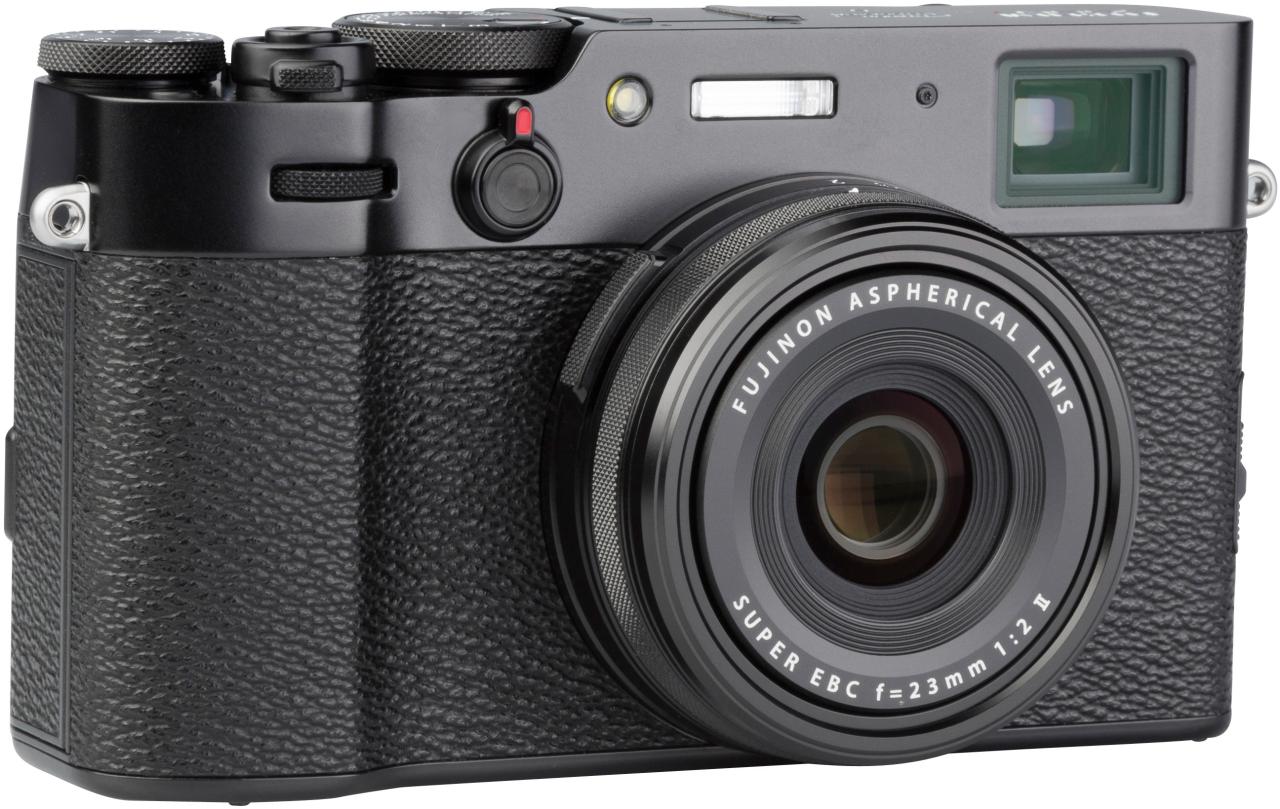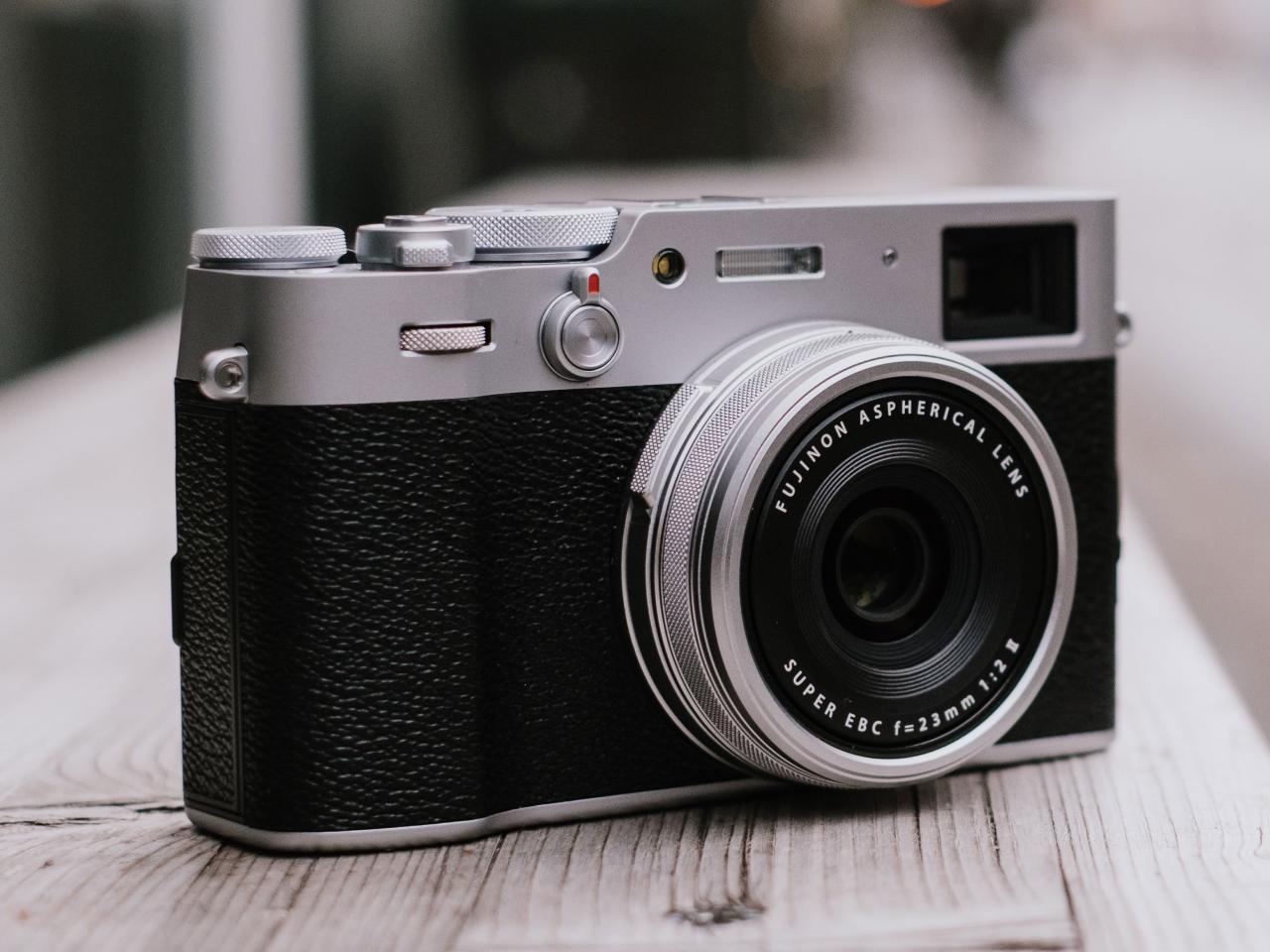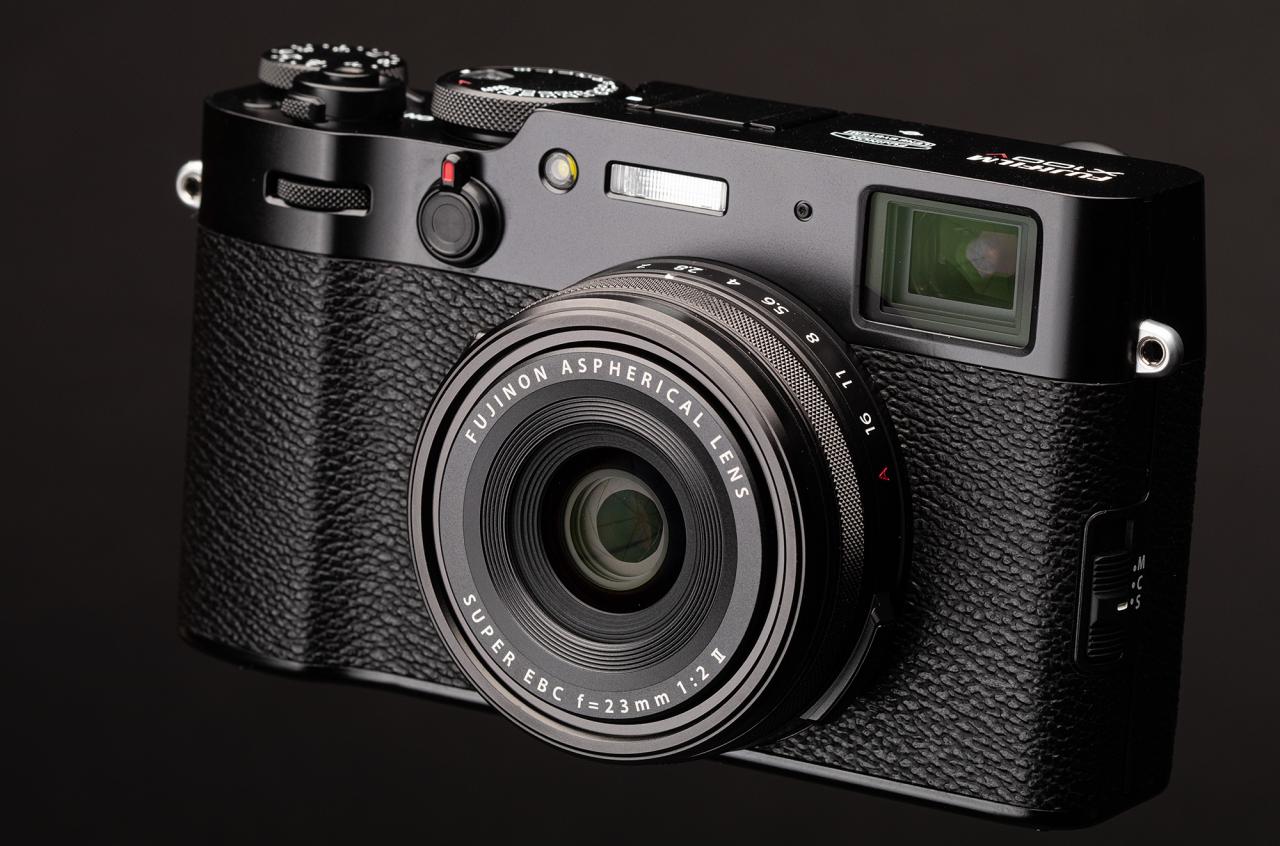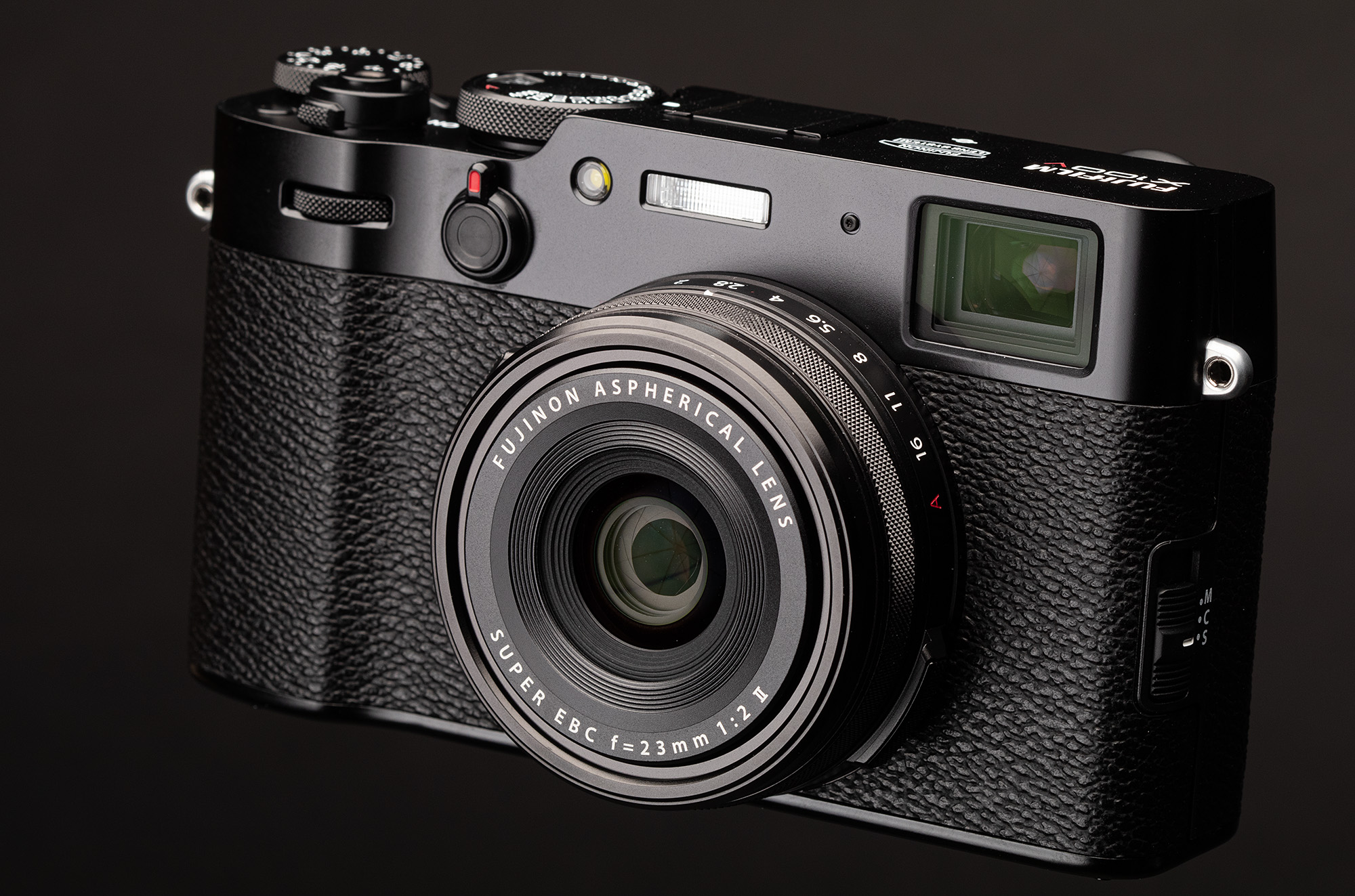The Fujifilm X100V stands as a testament to the enduring appeal of compact cameras with exceptional image quality. This review delves into its key features, performance, and overall user experience, offering a detailed analysis for both seasoned photographers and those considering their first premium compact. We’ll explore its impressive image sensor, versatile lens, and user-friendly interface, comparing it to its predecessors and competitors to establish its place within the current market landscape.
From its retro-inspired design to its advanced autofocus system, the X100V caters to a specific audience seeking a blend of classic aesthetics and modern technology. We’ll examine the camera’s strengths and weaknesses, providing real-world examples and insightful comparisons to aid in your decision-making process.
Fujifilm X100V: A Deep Dive into the Iconic Compact Camera
The Fujifilm X100V, a compact camera that seamlessly blends retro aesthetics with modern technology, has solidified its place as a favorite among photography enthusiasts. This in-depth review delves into its key features, performance, and overall user experience, providing a comprehensive understanding of what this camera offers.
Fujifilm X100V Overview
The X100V boasts a 26.1MP X-Trans CMOS 4 sensor, a significant upgrade from its predecessors. Its refined design incorporates a tilting touchscreen, enhancing usability and creative control. The camera’s target audience includes both seasoned photographers seeking a versatile everyday camera and newcomers drawn to its stylish design and intuitive operation.
The Fujifilm X100V, with its exceptional image quality and compact design, is a fantastic camera for street photography. Its portability makes it ideal for capturing spontaneous moments, unlike the situation reported in the news about a nj drone shot down , which highlights the contrasting challenges of aerial versus ground-level photography. Ultimately, the X100V’s ease of use and superior image rendering remain compelling reasons for its continued popularity among photographers.
X100V Design and Ergonomics
The X100V retains the classic rangefinder-style design of its predecessors, but with improved ergonomics. The addition of a tilting touchscreen provides flexibility for various shooting angles, while the refined physical controls offer a tactile and satisfying shooting experience. The camera’s compact size and lightweight build make it highly portable, ideal for street photography and travel.
Target Audience for the X100V
The X100V appeals to a broad range of photographers. Its blend of retro aesthetics and modern technology makes it attractive to both experienced photographers seeking a high-quality compact camera and those new to photography who appreciate its user-friendly interface and stylish design. Its portability makes it a perfect travel companion, while its image quality is sufficient for professional use.
| Feature | X100 | X100T | X100F | X100V |
|---|---|---|---|---|
| Sensor Size | 16.3MP APS-C X-Trans CMOS I | 16.3MP APS-C X-Trans CMOS II | 24.3MP APS-C X-Trans CMOS III | 26.1MP APS-C X-Trans CMOS 4 |
| Autofocus System | 49-point | 77-point | 343-point | 425-point |
| Screen Type | Fixed LCD | Fixed LCD | Fixed LCD | Tilting Touchscreen LCD |
| Price (USD at launch) | Approximately $1,300 | Approximately $1,200 | Approximately $1,300 | Approximately $1,400 |
Image Quality and Performance

The X100V’s 26.1MP X-Trans CMOS 4 sensor delivers exceptional image quality, characterized by vibrant colors, fine detail, and excellent dynamic range. The X-Processor 4 image processing engine ensures fast processing speeds and minimal noise, even in low-light conditions. The camera’s dynamic range allows for significant recovery in post-processing, providing flexibility in challenging lighting situations.
X100V Sensor Capabilities and Dynamic Range

The X-Trans CMOS 4 sensor, with its unique color filter array, minimizes moiré and false colors, resulting in cleaner and more natural-looking images. Its wide dynamic range allows for capturing details in both highlights and shadows, offering significant post-processing flexibility. Low-light performance is also impressive, with minimal noise even at higher ISO settings. For example, a nighttime city shot at ISO 3200 showed minimal noise with excellent detail retention.
Image Processing Engine and its Effect on Image Quality
The X-Processor 4 significantly improves processing speed and image quality. It facilitates faster autofocus, reduced noise, and enhanced film simulations. The processing engine’s efficiency results in sharper images with more accurate color reproduction and smoother tonal transitions. A comparison of images processed with the X-Processor 4 versus previous generations shows a clear improvement in detail and color accuracy.
Examples of Images Taken with the X100V
A portrait shot in soft, diffused light using the Classic Chrome film simulation showcases the camera’s ability to capture subtle skin tones and details. A landscape image taken on a sunny day using the Acros film simulation demonstrates the camera’s ability to handle high contrast scenes with rich detail and deep blacks. A low-light street scene captured using the monochrome mode highlights the camera’s low-light capabilities and excellent detail preservation.
Lens and Film Simulations
The X100V features a fixed 23mm f/2 lens (35mm equivalent), a versatile focal length ideal for street photography, portraits, and landscapes. The lens offers excellent sharpness, minimal distortion, and pleasing bokeh. Fujifilm’s renowned film simulations add a creative dimension, allowing users to emulate the look and feel of classic films.
Characteristics of the 23mm f/2 Lens
The 23mm f/2 lens is renowned for its sharpness throughout the frame, even at wide open apertures. Distortion is minimal, and the lens produces a pleasing, creamy bokeh. Its fast aperture allows for shooting in low-light conditions and creating shallow depth of field effects. Its compact size and lightweight build contribute to the overall portability of the camera.
Fujifilm Film Simulations and Their Impact
Fujifilm’s film simulations offer a unique creative tool. They mimic the look and feel of classic film stocks, offering distinct color palettes and tonal characteristics. For instance, Classic Chrome produces muted tones with rich colors, while Acros provides a high-contrast black and white look with exceptional detail. Each simulation alters the image’s aesthetic, allowing photographers to achieve a desired stylistic effect without extensive post-processing.
- Classic Chrome: Muted tones, rich colors, subtle contrast.
- Acros: High-contrast black and white, excellent detail.
- Provia: Natural colors, high fidelity.
- Velvia: Vibrant, saturated colors, high contrast.
- Astia: Soft, smooth tones, low contrast.
Lens Performance Compared to Other Prime Lenses
The X100V’s 23mm f/2 lens compares favorably to other prime lenses in its focal length range. While some lenses may offer slightly better sharpness or wider apertures, the X100V’s lens provides a good balance of sharpness, portability, and image quality. Its compact size and lightweight build are significant advantages, especially for photographers prioritizing portability.
User Experience and Features
The X100V offers a user-friendly interface with intuitive controls. Its physical dials and buttons provide tactile feedback and allow for quick adjustments, while the tilting touchscreen simplifies composition and review. The camera’s autofocus system is responsive and accurate, offering various focusing modes to suit different shooting scenarios.
Autofocus System Performance and Focusing Modes
The X100V’s 425-point autofocus system is significantly improved over previous models. It offers fast and accurate focusing in various lighting conditions and shooting scenarios. Focusing modes include single-point, zone, and wide/tracking, providing flexibility for different subject matter. The hybrid autofocus system combines phase-detection and contrast-detection for improved accuracy and speed.
Advantages and Disadvantages of Physical Controls
The physical controls of the X100V offer a satisfying tactile experience and allow for quick adjustments without taking your eyes away from the viewfinder. However, some users might find the smaller size and placement of certain buttons challenging. The camera’s intuitive design, however, generally mitigates these challenges.
X100V Video Capabilities
The X100V offers video recording capabilities up to 4K at 30fps. While not its primary function, it provides a useful secondary feature for capturing video footage. Features include various frame rates and recording options, allowing users to tailor video quality and file size to their needs.
Competitor Analysis
The Fujifilm X100V competes with other premium compact cameras such as the Ricoh GR III and Sony RX1R II. While each camera has its strengths and weaknesses, the X100V distinguishes itself through its blend of retro aesthetics, excellent image quality, and versatile feature set.
| Feature | Fujifilm X100V | Ricoh GR III | Sony RX1R II |
|---|---|---|---|
| Price (USD) | Approximately $1,400 | Approximately $900 | Approximately $3,300 |
| Image Quality | Excellent, vibrant colors, fine detail | Excellent, sharp images, good dynamic range | Exceptional, high resolution, outstanding detail |
| Size & Portability | Compact, lightweight | Very compact, extremely lightweight | Relatively compact for a full-frame camera |
| Strengths | Film simulations, retro design, tilting screen | Exceptional image quality, compact size | Full-frame sensor, high resolution |
| Weaknesses | Fixed lens, relatively high price | Limited video capabilities | High price, limited autofocus system |
Niche of the X100V in the Market
The X100V occupies a unique niche in the market. It caters to photographers who value image quality, portability, and a stylish design. Its blend of classic aesthetics and modern technology makes it appealing to a wide range of users, from seasoned professionals to photography enthusiasts.
Accessories and Customization, Fujifilm x100v
A range of accessories is available for the X100V, including additional lenses (via adapters), filters, and carrying cases. Users can customize the camera’s settings and functions to suit their preferences, creating a personalized shooting experience. This includes assigning custom functions to buttons, adjusting the image quality settings, and selecting preferred film simulations.
Available Accessories and Customization Options
Users can add external lenses through adapters, expanding the camera’s versatility. Filters, such as ND filters and polarizers, can be used to control light and enhance image quality. Carrying cases and straps provide protection and convenience. Customizing the camera’s settings, such as assigning frequently used functions to specific buttons, further streamlines the shooting process.
Creative Uses of X100V Features and Accessories

Using filters can create unique artistic effects, while different film simulations can dramatically change the mood and aesthetic of images. The combination of the tilting screen and the compact size allows for creative shooting angles and perspectives. For example, using an ND filter can allow for shooting long exposures in bright conditions, capturing light trails or blurring water.
Examples of User Personalization
Users might add a leather half-case for a classic look, or a wrist strap for added security. They might also customize the button assignments to prioritize functions they use most frequently. These personal touches reflect the user’s individual style and preferences, further enhancing the camera’s appeal.
The Fujifilm X100V is renowned for its exceptional image quality and compact design, perfect for street photography. However, for capturing broader perspectives and aerial shots, a different approach is needed; consider the versatility offered by a drone with camera , which provides a unique vantage point. Returning to the X100V, its strengths lie in its intimate perspective and ease of use, making it an ideal complement to a drone for diverse photographic needs.
Ultimately, the Fujifilm X100V proves itself a compelling option for photographers who value image quality, portability, and a tactile shooting experience. While it may not be the perfect camera for every photographer, its blend of classic design and modern technology creates a unique and satisfying shooting experience. Whether you’re drawn to its film simulations, its exceptional lens, or its intuitive controls, the X100V offers a compelling blend of form and function that sets it apart in a crowded market.
Its strengths significantly outweigh its weaknesses, making it a worthy contender for any photographer’s kit.
Essential Questionnaire: Fujifilm X100v
What is the battery life like on the Fujifilm X100V?
Battery life is generally considered adequate for a day’s shooting, but carrying a spare battery is recommended, especially for extensive use.
Does the X100V offer in-body image stabilization (IBIS)?
No, the X100V does not have IBIS. It relies on lens-based stabilization and the photographer’s technique.
How well does the X100V perform in low-light conditions?
While not as strong as some full-frame cameras, the X100V handles low light reasonably well thanks to its sensor and image processing. Noise is manageable at higher ISO settings.
Can the Fujifilm X100V shoot 4K video?
Yes, but at a cropped sensor and limited frame rates compared to other cameras.
